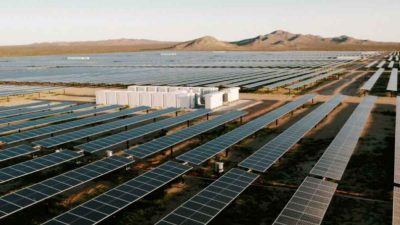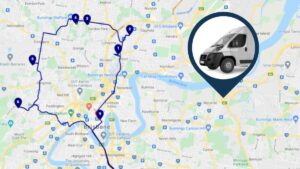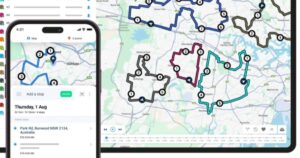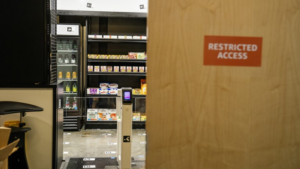Artificial intelligence is helping Amazon to provide power, regardless of the weather, through solar panels.
The solar panels are lined up at the Baldy Mesa solar farm in Southern California, near the Mojave Desert. The farm turns sunlight into carbon-free energy and sends it back into the grid. It’s Amazon’s “largest planned solar-plus-storage project” in the US.
Come rain or sunshine, the energy never stops flowing. A football field-sized battery energy storage system (BESS) next to the solar panels sends electricity gathered during the day back to the grid, ensuring that carbon-free energy is available even at night.
Solar and wind power are some of the fastest ways to help decarbonize electricity grids, but it all depends on the amount of sun or wind.
Steady supply of electricity
Amazon uses battery storage systems to boost the solar output when the sun is not shining.
“At Baldy Mesa, a solar farm …[is] helping predict when and how the project’s battery unit should charge and discharge energy back to the grid,” says the American online retailer.
Amazon has ten solar energy projects paired with battery energy storage systems. It represents nearly 1.5 gigawatts (GW) of battery energy storage capacity.
How is AI playing a role?
At Baldy Mesa solar farm, AI optimizes the battery’s performance. It’s an “emerging trend by carbon-free energy owners and operators.” They are increasingly turning to machine learning (ML) to strengthen carbon-free energy production and help stabilize the grid.
Using real-time weather data and historical grid data can help stabilize the grid.
“AI is an important tool that’s already helping our society transition to carbon-free energy and address climate change at scale,” says Kara Hurst, Amazon’s vice president of worldwide sustainability.
Case study of AI collecting data
According to the International Energy Agency (IEA), the world’s fleet of wind turbines is estimated to produce more than 400 billion data points per year. Amazon says this is what AI and ML models can learn from. It helps to improve the operational efficiency of carbon-free energy projects.
According to Fluence, the solutions provider, Baldy Mesa, software (leveraging ML) is expected to analyze up to 33 billion data points yearly. The software maximizes the solar farm’s battery value by optimizing energy buying, storing, and selling. It bases its information on grid conditions.
In California, the same ML solution predicted a heatwave and stabilized the grid by supplying stored solar energy.
Photo credit: Amazon
About the author
Mia is a multi-award-winning journalist. She has more than 14 years of experience in mainstream media. She's covered many historic moments that happened in Africa and internationally. She has a strong focus on human interest stories, to bring her readers and viewers closer to the topics at hand.












